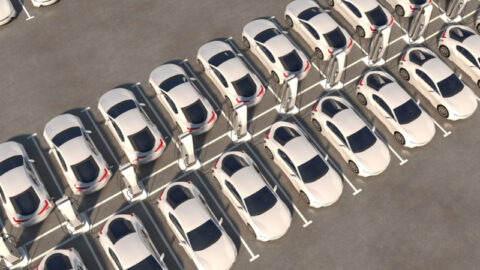A surge of votes for minor parties and independents in the federal election made it clear that Australians want stronger action on climate change — but what might this look like for the energy sector?
As results continue to trickle in, it’s unclear if the Labor Government will be able to form a majority in the lower house.
Labor has committed to boosting renewable energy and cutting emissions, but the increased presence of Greens MPs and teal independents means that there could be more pressure for stronger energy policies.
Solar Citizens’ Deputy Director, Stephanie Gray, said, “Australians have cast their vote for a cleaner future.
“They’ve thrown their support behind Labor’s commitments to increase the country’s 2030 emissions reduction target, hasten the transition to clean and cheap renewable energy, and make electric transport more affordable.
“Aussie households have seen for themselves that having solar panels on your roof or an electric car in your garage can save you money while helping to do your bit for the environment.
“Communities from the inner cities to the regions are already seeing the benefits of cheap clean energy that can power new industries and deliver future-proof jobs.
“Australians have demanded change this election, and we’ve seen a huge shift in how people talk about and vote on climate and clean technology, like renewables and EVs.”
Here, we look at Labor’s current climate plans and what the next government’s energy policies could look like.
Net zero
In 2021, Australia committed to reaching net-zero emissions by 2050. Under Labor’s Powering Australia plan, Australia would reduce emissions by 43 per cent by 2030, based on 2005 levels. This target follows a plan to limit warming to 2 degrees.
Research from the CSIRO found that net zero emissions could be reached by 2035, in line with the Paris Agreement objective of limiting warming to 1.5 degrees.
If Labor is unable to form a majority government, the crossbench would increase pressure for a stronger 2030 goal. Some independent MPs have called for targets of 60 per cent by 2030, while the Greens have called for a plan to reduce Australia’s emissions by 75 per cent.
Labor, the Greens and teal independents have all called to legislate Australia’s net zero emissions plan, and are looking to reinvigorate institutions such as the Climate Change Authority.
Expert analysis predicts that the teal independents will likely support Labor’s initiatives to standardise company reporting on climate impact.
Electricity
Labor’s Powering Australia plan includes upgrades to the electricity grid, and a goal of having renewable energy making up 80 per cent of the electricity mix by 2030. The goal aligns with priorities of teal independents.
Labor’s policies commit $20 billion for new transmission infrastructure, and investment in ultra low-cost solar banks, community batteries and improving energy efficiency.
Transport
Labor has proposed Australia’s first National Electric Vehicle Strategy, which will remove taxes and duties on lower-cost electric vehicles, and aims to push 75 per cent of all new fleet cars to be low-emissions by 2025.
Teal independents want 76 per cent of new vehicle sales to be electric by 2030, and the Greens are likely to push for stronger goals following its own proposed $6.1 billion electric vehicle plan.
Agriculture
There is likely to be crossbench support for Labor’s plan to reduce methane emissions from livestock and farming, increasing tree planting and investment in low-carbon agriculture practices.
Industry
Labor’s plans for cutting emissions in the industrial sector include $3 billion to support the industry’s low-carbon transition, such as for manufacturing green metals like steel and aluminum.
It also includes a safeguard mechanism that will mandate emissions reductions for big polluters.
The Greens and teal independents are likely to put increased emphasis on stronger policies in this area, and want to halve industrial emissions by 2030.

















Our goal should be to aim for the highest possible in all areas of our endeavour. For example, in electric power generation, the renewable energy zones should be open to all reliable installers who want to participate. In addition all Australian households and communities should be encouraged to install solar PV to the maximum extent possible.
In our household of two, we have just over 6kW of solar, a split solar hot water system, all-electric cooking with induction cooktops, a hybrid vehicle and finally a recently purchased electric vehicle- a Kia Niro EV.
The mower is also electric. Hopefully, in the future, the hybrid vehicle will be replaced with a fully electric one.
If every household that can afford to do so pursues this pathway, we can transition more rapidly.
Instesd of having a levey of 10% on a new electric vehicle, Governments can encourage the purchase of electric vehicles by reducing it to 5% as an incentive.